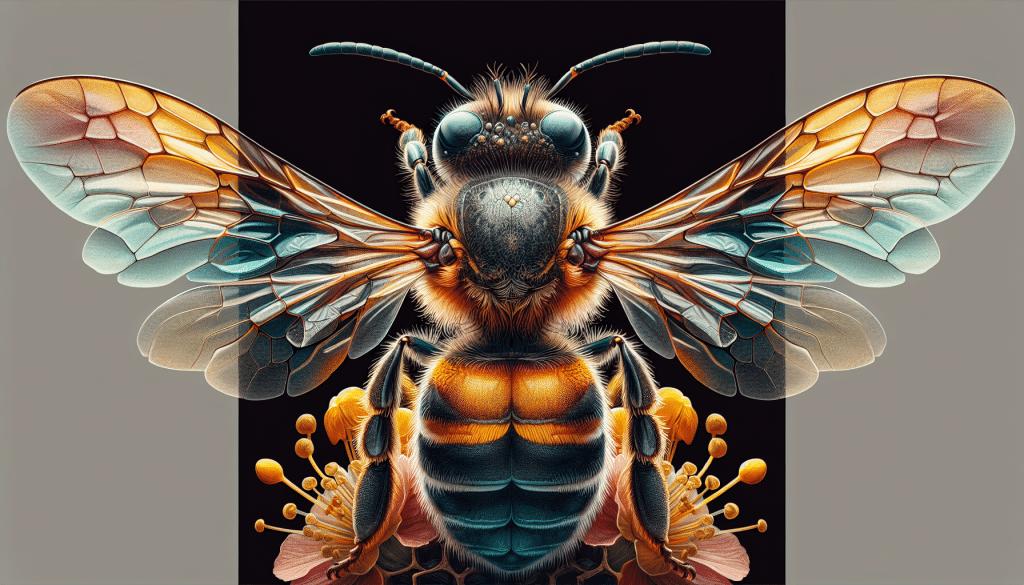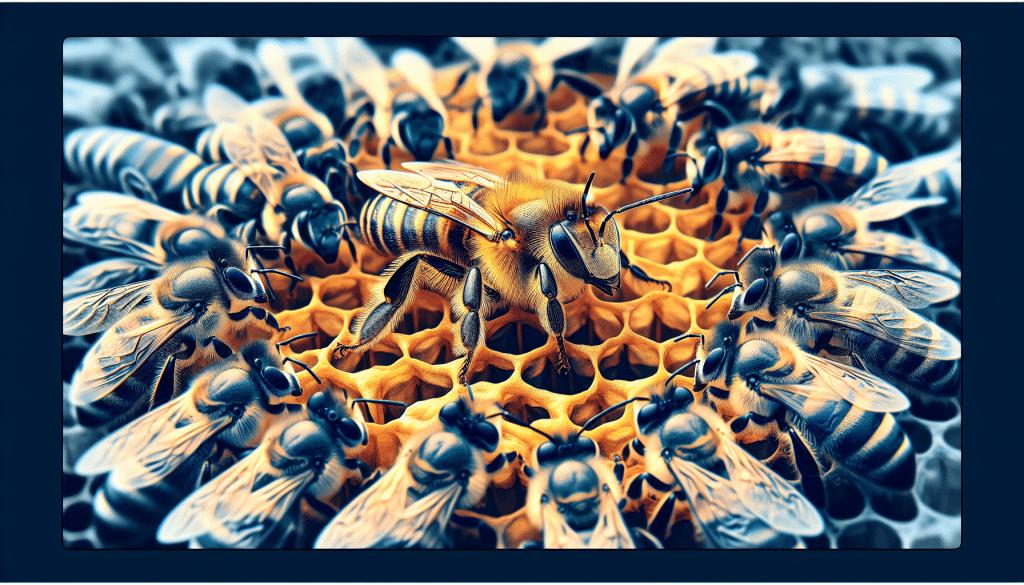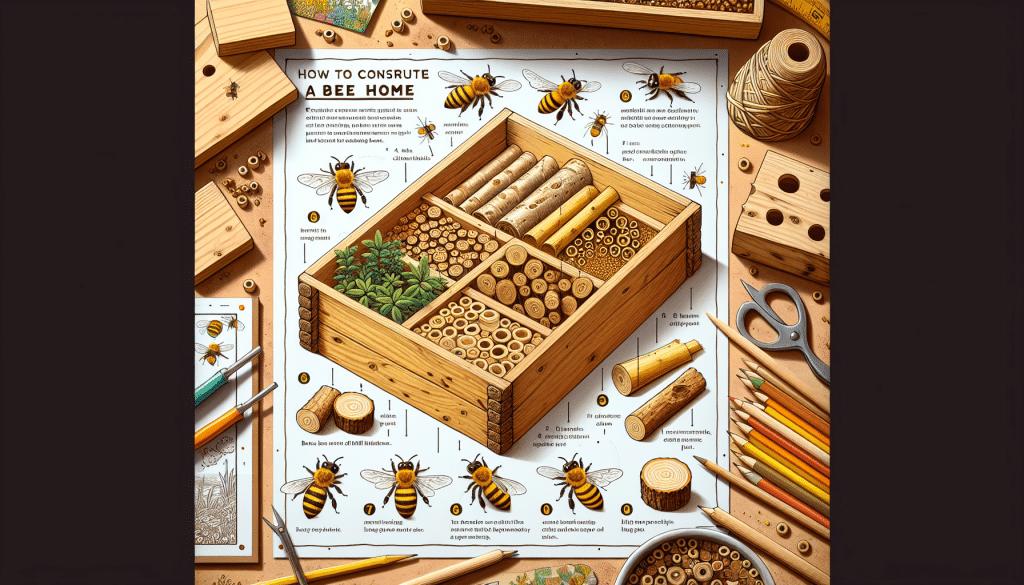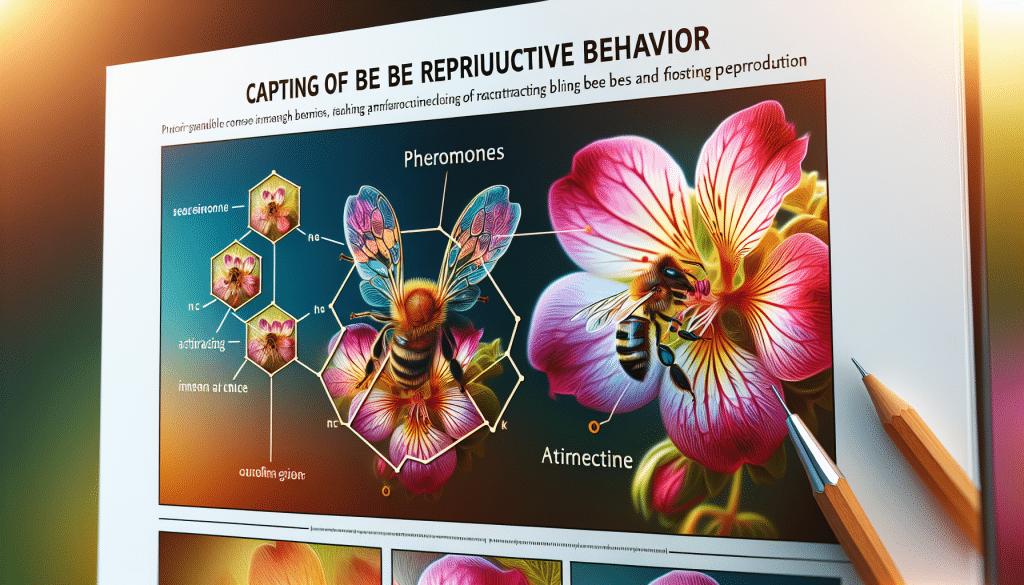Do you ever wonder what those buzzing creatures flying around you are? Well, they might just be bees! Bees are fascinating insects that come in different shapes, sizes, and colors. In this article, you will learn all about the various types of bees and how to identify them. So let’s put on our detective hats and get ready to explore the world of bees!

Understanding the Importance of Bees
Bees are tiny creatures that play a big role in our world. One of the most important jobs that bees do is pollination. Pollination is when bees transfer pollen from one flower to another, helping flowers grow and produce seeds. This is very important because many plants, including fruits and vegetables, rely on bees to pollinate them. Without bees, our world would be a lot less colorful and our plates would be a lot less delicious!
In addition to pollination, bees also contribute to biodiversity. Biodiversity means having a variety of different living things in an ecosystem. Bees help to increase biodiversity by pollinating different types of plants. They also provide food for other animals, such as birds and small mammals. Bees are like superheroes of the insect world, helping to keep our ecosystems balanced and thriving.
Another great thing about bees is that they make honey. Honey is a sweet and delicious treat that bees work very hard to make. They collect nectar from flowers and then transform it into honey using their special bee powers. Honey is not only tasty, but it also has many health benefits. It can soothe a sore throat and is a natural source of energy. So next time you enjoy a spoonful of honey, remember to thank the bees for their hard work!
Basic Classification of Bees
There are many different types of bees in the world, each with its own unique characteristics. One way to classify bees is by distinguishing them from wasps. Bees and wasps may look similar, but they have some key differences. Bees are usually rounder and hairier than wasps, while wasps are more slender and have less hair. Bees are also generally friendlier than wasps, as they are focused on gathering nectar, while wasps are more interested in hunting other insects.
Within the bee family, there are bumble bees and honey bees. Bumble bees are known for their fuzzy appearance and are often black and yellow. Honey bees, on the other hand, are smaller and have a more slender body. They are usually a light brown or yellow color. Both bumble bees and honey bees are social bees, which means they live in colonies with many other bees.
In addition to social bees, there are also solitary bees. Solitary bees, as the name suggests, live alone rather than in large colonies. They come in many shapes and sizes, but they are typically smaller than honey bees and bumble bees. Solitary bees are independent workers and do not rely on a hive or a queen to survive. They make their nests in various places, such as in the ground or in small holes in wood.

Features for Identifying Bees
If you want to identify bees, there are a few key features to look out for. First, you can consider their size. Bees come in different sizes, ranging from tiny bees that are less than a centimeter long to larger bees that can be a few centimeters long. Bumble bees, for example, are usually larger than honey bees, while solitary bees are generally smaller.
Another characteristic to observe is their color. Bees can be black, brown, yellow, or a combination of these colors. Bumble bees are typically black and yellow, while honey bees are more golden or brownish in color. Solitary bees can come in various colors, such as metallic blue or green. Some bees also have stripes or patterns on their bodies, which can help with identification.
The shape of a bee’s body is also important. Honey bees and bumble bees have compact bodies with a distinct waist, while solitary bees can have different body shapes depending on the species. Some solitary bees have long, slender bodies, while others have rounder bodies. By paying attention to these body shapes, you can learn to identify different types of bees.
Lastly, observing bee behavior can provide clues about their identity. Bees are often seen buzzing around flowers, collecting nectar and pollen. They are gentle and focused on their task, so you can approach them without fear. Some bees, like bumble bees, can be quite loud when flying, while others, such as honey bees, are quieter. These behavioral traits can help you distinguish between different types of bees.
Specific Bee Species Identification
Now that you know the basic features to identify bees, let’s delve into some specific bee species. One of the most well-known bee species is the honey bee. Honey bees are small and have a brownish-yellow color. They live in hives and work together to collect nectar and pollen. Honey bees are excellent pollinators and are famous for making honey. They are an important part of agriculture and help to produce the delicious fruits and vegetables we love to eat.
Another common bee species is the bumble bee. Bumble bees are bigger than honey bees and have a rounder body. They are typically black and yellow and have a fuzzy appearance. Bumble bees are social bees, living in colonies with a queen bee. They are strong pollinators and are important for the survival of many plants.
Carpenter bees are another type of bee you might encounter. These bees are larger than honey bees and bumble bees and are usually black or metallic blue in color. Carpenter bees get their name because they like to make their nests in wood. They create holes in fences, decks, or even wooden furniture. While they may cause damage to wood, carpenter bees also play a role in pollination.
Mason bees are smaller and darker than honey bees. They are excellent pollinators and are known for their ability to collect pollen. Mason bees get their name because they use mud to build their nests. They gather mud and shape it into small compartments to lay their eggs. Mason bees are solitary bees and do not live in colonies like honey bees and bumble bees.
Mining bees are another type of solitary bee. They are usually small and can vary in color from black to brown to metallic green. Mining bees get their name because they like to dig tunnels in the ground to make their nests. These bees are great pollinators and are important for maintaining healthy ecosystems.
Lastly, there are leaf cutter bees. These bees are similar in size to honey bees and are usually black with white, yellow, or tan markings. Leaf cutter bees get their name because they use pieces of leaves to build their nests. They cut small circular pieces from leaves and paste them together to create homes for their offspring. Leaf cutter bees are also solitary bees and are known for their efficient pollinating abilities.

Habitat and Behavior of Different Bees
Bees have different nesting habits depending on their species. Honey bees live in hives, which are structured and organized homes. Inside the hive, there is a queen bee who lays eggs, worker bees who collect nectar and pollen, and drones who mate with the queen. Honey bee hives can be found in many places, from trees to man-made structures such as beehives.
Bumble bees are also social insects and live in colonies. Their nests are usually located in underground burrows or in protected areas like abandoned rodent nests. Bumble bee colonies are smaller than honey bee colonies and typically have a few hundred bees. Bumble bees are not as common as honey bees and can be found in more temperate climates.
Solitary bees have different nesting habits compared to social bees. Some solitary bees, like carpenter bees, make their nests in wood. They will excavate tunnels inside pieces of wood and create individual chambers for their offspring. Other solitary bees, like mining bees, dig tunnels in the ground to make their nests. These ground nests can be found in gardens, lawns, or other areas with loose soil.
Bees are hardworking pollinators and have specific behaviors when it comes to pollination. They visit flowers to collect nectar, a sweet liquid that provides energy, and pollen, a powdery substance that contains the male reproductive cells of plants. When bees land on a flower, pollen sticks to their bodies. As they move from flower to flower, some of the pollen rubs off onto the female parts of the flowers, allowing pollination to occur.
Social bees, like honey bees and bumble bees, communicate with each other using dance-like movements and pheromones. They share information about the location of flowers and food sources, ensuring the whole colony knows where to find the best nectar and pollen. Solitary bees do not have the same level of communication, as they live alone. They rely on their instincts to find flowers and collect enough resources for themselves and their offspring.
Comparison of Bees with Other Insects
Bees and wasps may look similar, but they have some notable differences. Bees are usually rounder and hairier than wasps, while wasps are more slender and have less hair. Bees are also generally friendlier than wasps, who can be more aggressive and may sting more easily. Wasps are often scavengers and are interested in searching for food, while bees are primarily focused on gathering nectar and pollen.
Hornets are a type of wasp, and they are larger and more powerful than most bees. They have a reputation for being aggressive and can deliver painful stings. Hornets are also scavengers and are known for hunting and feeding on other insects. They build large nests, usually in trees or high up in buildings.
Flies are another insect that can be confused with bees. Flies have only two wings, while bees have four. Flies also have different body shapes and do not collect pollen like bees do. Flies are important for pollination, but they are not as efficient as bees. Bees have special structures on their bodies that help carry and transfer pollen from flower to flower, making them superior pollinators.
Male vs Female Bees
Male and female bees, also known as drones and worker bees, have some distinct differences. Morphologically, male bees are usually larger than female bees. They have bigger eyes and a more rounded abdomen. Female bees, on the other hand, have a stinger and pollen baskets on their legs. Male bees do not have a stinger.
In a bee colony, female bees have specific roles within the hive. Worker bees, which are all female, are responsible for tasks such as collecting nectar and pollen, caring for the young, and building and maintaining the hive. The queen bee, who is also female, is in charge of laying eggs and keeping the colony alive. She is the most important bee in the hive.
Male bees, or drones, have a different role within the hive. Their primary job is to mate with the queen bee. Once a drone mates, it dies shortly after. Drones do not collect food or build the hive like worker bees. Their sole purpose is to ensure the survival of future generations of bees.
Stinging Insects Identification
Some bees, as well as other insects, have the ability to sting if they feel threatened. It’s important to be able to identify these stinging insects to avoid getting stung. Bees, including honey bees, bumble bees, and solitary bees, have a stinger and can sting to defend themselves. Their stingers are barbed, which means they get stuck in the skin after stinging, causing the bee to die shortly after.
Wasps are another type of stinging insect, and they can sting multiple times without dying. They have a smooth stinger that allows them to sting repeatedly. Wasps are typically more aggressive than bees and may sting if they feel threatened.
Hornets are a type of wasp that is larger and more powerful than most bees. They have a powerful sting that can be quite painful. Hornets are generally more aggressive than bees and may attack if their nest is disturbed.
Yellow jackets are a type of wasp that, like hornets, can deliver painful stings. They are known for building nests in the ground or in structures such as walls or attics. Yellow jackets are social insects and can be very aggressive when their nest is threatened.
Role of Bees in Our Ecosystem
Bees have a crucial role in our ecosystems, and their importance goes beyond just providing us with delicious honey. Bees are one of the main pollinators in the world, helping plants reproduce by transferring pollen from the male parts of flowers to the female parts. This process is essential for the production of fruits, vegetables, nuts, and seeds.
In addition to pollination, bees also play a key role in the food chain and contribute to biodiversity. Many animals, such as birds and small mammals, rely on bees as a food source. Without bees, these animals would have fewer resources and could struggle to survive. Bees also help to maintain a healthy balance in ecosystems and support the growth of different plant species, which leads to a more diverse and resilient environment.
Furthermore, the presence of bees can act as an indicator of environmental health. Bees are sensitive to changes in their surroundings, such as pollution or loss of habitat. When bee populations decline, it can be a sign that something is wrong in the environment. By monitoring and protecting bee populations, we can gain insights into the overall health of our ecosystems and take action to preserve them.
Conservation of Bees
Bees face several threats that can harm their populations and impact their important role in our ecosystems. One of the biggest threats is habitat loss. As more land is cleared for agriculture or urban development, bees lose their natural habitats and sources of food. Pesticides and insecticides also pose a significant risk to bees, as they can be toxic and harm their health.
To protect bee populations, efforts are being made to create bee-friendly environments. This includes planting native flowers and providing a variety of flowering plants throughout the year to ensure a continuous food source for bees. Avoiding the use of harmful chemicals, such as pesticides, is also important to create a safe environment for bees. Creating bee-friendly habitats in gardens, parks, and even on rooftops can provide a sanctuary for bees to thrive.
Education and awareness also play a crucial role in bee conservation. By learning about the importance of bees and their role in our ecosystems, we can take action to protect them. Teaching children about bees and the need for conservation can help create a future generation that values and cares for these incredible insects.
In conclusion, bees are not just buzzing insects that fly around flowers. They are essential to our world, playing a vital role in pollination, contributing to biodiversity, and providing us with delicious honey. By understanding the different types of bees, identifying their features, and learning about their habitats and behaviors, we can truly appreciate the incredible diversity and importance of these remarkable creatures. Let’s work together to protect bees and create a bee-friendly environment for them to thrive for generations to come.



